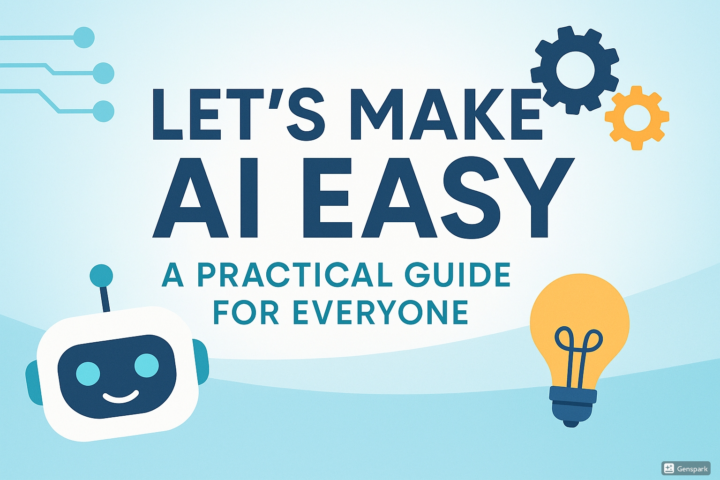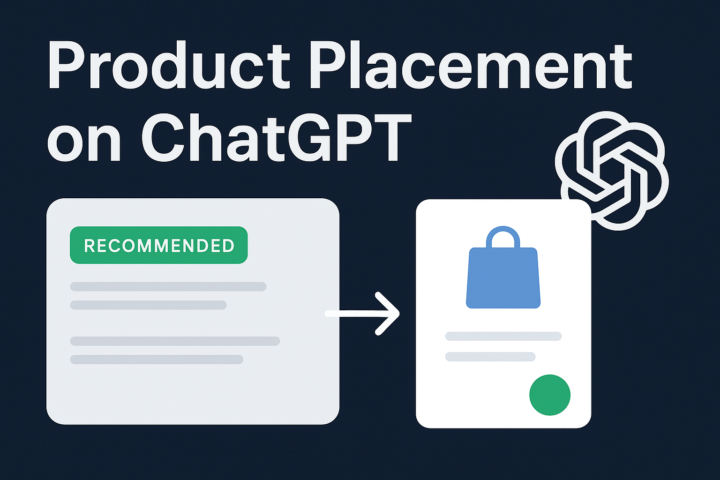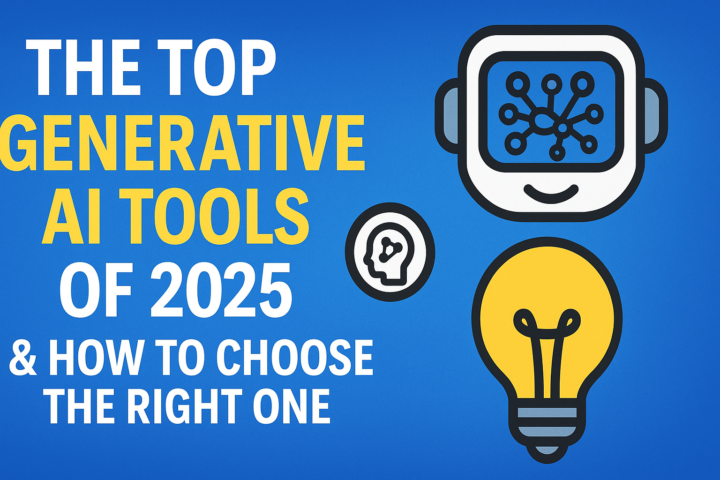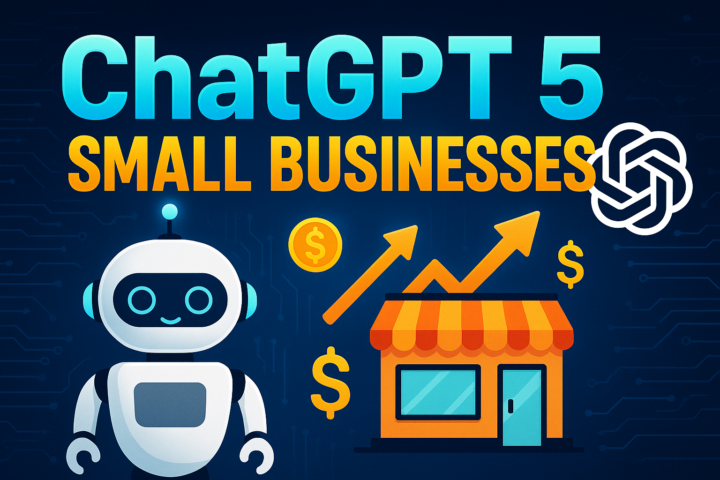Activity
Mon
Wed
Fri
Sun
Jan
Feb
Mar
Apr
May
Jun
Jul
Aug
Sep
Oct
Nov
Dec
What is this?
Less
More
Owned by Don
A community for small businesses using Gurus AI to automate workflows, scale with ease, and build ethical, mission-aligned systems that work for you
Memberships
AI Automation (A-Z)
120.8k members • Free
AI Automation Agency Hub
277.3k members • Free
8 contributions to Gurus AI
Let’s Make AI Easy: A Practical Guide for Everyone
Artificial Intelligence (AI) often feels overwhelming. Between technical jargon, futuristic predictions, and endless new tools, many people wonder: Where do I even start? The truth is, AI doesn’t have to be complicated. When explained in simple terms, it becomes a powerful everyday helper—just like email or smartphones once did. Let’s break it down. 🤖 What Is AI, Really? At its core, AI is about teaching computers to recognize patterns and make decisions. - Traditional software = follows exact rules you give it. - AI = learns from data, then makes predictions or generates new things. Think of AI as a smart assistant that improves the more it works with you. 🔑 The 3 Types of AI You’ll Actually Use 1. Generative AI 2. Predictive AI 3. Assistive AI 🎯 Why It Matters for You AI isn’t just for tech companies—it’s for anyone who works, creates, or learns. Here’s what it can do for you right now: - Save Time → Draft emails, reports, or proposals in seconds. - Boost Creativity → Brainstorm designs, marketing campaigns, or social posts. - Improve Decisions → Get insights from data you’d normally ignore. - Automate Repetition → Free up time from boring, repetitive work. 🛠️ How to Get Started (Without Overthinking It) 1. Pick One Tool → Start with ChatGPT or Gemini for text, MidJourney for visuals, or Runway for video. 2. Use It Once Daily → Replace a single small task (e.g., summarizing notes or drafting social posts). 3. Learn by Doing → Don’t worry about perfect prompts—just ask AI in plain language. 4. Build a Habit → Within a week, you’ll naturally see where AI fits into your workflow. ⚖️ Keeping It Balanced AI is powerful, but it isn’t magic. It can make mistakes, invent facts (“hallucinate”), or reflect bias. That’s why the human touch—your judgment, creativity, and ethics—is still the most important part. Think of AI as a partner, not a replacement. 🌐 The Bottom Line AI is here to stay, but it doesn’t have to be intimidating. If you start small, focus on real tasks, and treat AI as a helper, you’ll discover that it’s not about robots taking over—it’s about making life easier, faster, and a little more fun.
0
0

🛠️ How Product Placement Works on ChatGPT
1. No Traditional Ads (But Recommendations Exist) OpenAI has said it does not run ads inside ChatGPT in the traditional sense (like banners or sponsored results). Instead, the focus is on trusted recommendations. If a user asks for “the best project management tool” or “where to design logos,” ChatGPT may recommend tools based on curated knowledge, partnerships, or integrations. 2. Two Key Channels for Businesses A. GPT Store (Custom GPTs) - Businesses can build their own Custom GPT (like an app inside ChatGPT). - These GPTs appear in the GPT Store, searchable by millions of users. - Example: A fitness coach builds a “Nutrition Coach GPT” that recommends their paid programs. - Businesses can link services/products directly inside their GPT. B. API & Partner Integrations - Companies can apply to be integrated natively into ChatGPT (e.g., Expedia, Instacart, Canva, Zapier already are). - These integrations let ChatGPT directly use your service when users ask for relevant tasks. - Example: If someone asks “Book me a flight,” ChatGPT can query Expedia’s API. 3. Becoming a Referred Business To have ChatGPT recommend your product in answers (like product placement), businesses typically: 1. Build a Custom GPT → Publish it in the GPT Store. 2. Apply for Integration Partnerships → Work with OpenAI’s partnerships team to connect your API/service. 3. Ensure High-Trust Use Cases → OpenAI prioritizes products that are safe, reliable, and widely useful. 4. Leverage Brand Mentions → Even without partnerships, ChatGPT may mention your business if it’s notable in your category. 4. Opportunities & Challenges ✅ Opportunities - Direct exposure to millions of ChatGPT users. - Positioning your tool as “AI-ready.” - Early adoption in the GPT Store ecosystem. ⚠️ Challenges - High competition in crowded categories. - OpenAI currently curates integrations (not open for everyone yet). - Maintaining trust/safety compliance is essential.
0
0

The Top Generative AI Tools of 2025 (and How to Choose the Right One)
Generative AI has moved from experimental labs into everyday business workflows. By 2025, it’s no longer a question of whether to use it, but which tools to adopt. With dozens of platforms competing—each promising speed, creativity, and efficiency—the challenge for teams is knowing which ones deliver the most value. This article highlights the top Generative AI tools of 2025 and provides a framework for choosing the right one for your needs. 🚀 The Top Generative AI Tools of 2025 1. OpenAI ChatGPT (Enterprise & GPT Store) Still the industry leader in conversational AI, ChatGPT now offers customizable GPTs, advanced reasoning, and enterprise-level compliance. It’s widely used for knowledge work, writing, and customer-facing AI assistants. Best for: Businesses seeking versatile, safe, and scalable text-based AI. 2. Anthropic Claude 3.5 Claude has become the "trusted advisor" of AI assistants—focusing on safety, reasoning, and handling long-context documents. Its popularity surged in law, education, and research sectors. Best for: Professionals needing thoughtful, context-rich responses. 3. Google Gemini 1.5 With native integration across Gmail, Docs, and Google Cloud, Gemini dominates the productivity AI space. Its multimodal abilities (text, images, video) make it a top contender. Best for: Teams already embedded in the Google ecosystem. 4. Mistral AI (Open-Weight Models) Known for efficiency and transparency, Mistral’s open-weight models are lightweight yet powerful. Developers and startups often prefer Mistral for customization. Best for: Builders who want control and open-source flexibility. 5. Stability AI (Stable Diffusion XL & Audio/Video Tools) From art to video generation, Stability remains a hub for open-source creative AI. With community-driven innovation, it’s ideal for those who want freedom beyond closed platforms. Best for: Artists, designers, and developers exploring visual creativity.
0
0

ChatGPT-5 Meets Small Business: Smarter Automation Smarter Growth
The AI landscape just stepped into a new era with the launch of ChatGPT-5. This “PhD-level expert in your pocket” marks a shift toward more capable, versatile, and affordable AI. For small businesses, this isn’t just hype—it’s a toolkit for transforming operations and maximizing efficiency. What’s Under the Hood? Key Features for Small Business Use 1. Adaptive Reasoning via Real-Time Routing GPT-5 dynamically chooses how deeply to reason based on the task—seamlessly switching between quick responses and in-depth analysis when needed. 2. Expanded Context Capabilities With support for much longer memory and context windows, GPT-5 can process long documents, customer histories, or multi-hour conversations without losing coherence. 3. Multimodal Integration & Agentic Workflows From processing images, audio, and video to generating short videos directly, GPT-5 bridges content formats. It also introduces tool-calling and workflow agents, enabling complex automation like CRM integration, data retrieval, and multi-step task execution. 4. Personalization and Personality GPT-5 offers selectable personalities and consistent tone control—crucial for brand alignment and customer-facing automation. 5. Flexible Modes for Speed vs. Depth Users can choose between modes like Auto, Fast, and Thinking, giving control over response time and depth—ideal for balancing workload and precision. 6. Reliable and Cost-Efficient GPT-5 boasts fewer hallucinations, stronger factual accuracy, and more cost-efficient output compared to prior models. Why This Matters for Small Businesses Feature Business Benefit Longer Context Windows Maintain conversation threads with clients—ideal for support, proposals, and check-ins. Agentic Automation Automate tasks like invoice drafting, social media posting, and email triage. Tool Integration Link to tools like Gmail, Calendar, CRMs, and analytics—execute actions directly. Personalization Keep your AI consistent with your brand voice, tone, and customer experience. Flexible Modes Quick replies for simple queries; deep analysis for strategy or writing—without toggling systems. Cost & Accuracy More dependable output at lower cost, maximizing ROI on AI investments.
0
0

Top Prompt Engineering Techniques (with Real Examples & Outcomes)
1. Zero-Shot Prompting Definition: Directly instruct the AI to perform a task with no examples. Why it works: Relies on the model’s general knowledge to understand your intent. Example Prompt: “Classify the following movie review as Positive, Negative, or Neutral. Review: ‘The storyline was engaging but the dialogue felt flat.’ Sentiment: ”Outcome: Correctly labels sentiment as Neutral, using just minimal guidance. 2. Few-Shot Prompting Definition: Include a few examples to demonstrate the format or style you expect. Why it works: Helps the model mimic structure and tone. Example Prompt: “Example: A 'baku' is a large blue flightless bird. ‘We saw many bakus on our trip.’ Now: ‘Write a short story about a baku that ended up on a spaceship bound for Mars." Uses the pattern to generate a coherent, stylistically consistent story. 3. Chain-of-Thought (CoT) Prompting Definition: Encourage step-by-step reasoning to solve complex tasks. Why it works: Breaks tasks into smaller logical parts, improving accuracy. Example Prompt: "I had 8 marbles, gave 3 away, then found 4 more. How many do I have now? Think step by step." Outcome: 1. You started with 8. 2. Gave away 3 → 5. 3. Found 4 more → 9.Answer: 9. 4. Meta Prompting Definition: Guide with abstract, structured steps instead of specifics—great for repeatable logic. Why it works: Keeps prompts flexible and reusable across tasks. Example Prompt: “Step 1: Define variables. Step 2: Apply formula. Step 3: Simplify and solve.” Outcome: Useful for generic coding problems or analytical processes. 5. Self-Consistency Prompting Definition: Generate multiple reasoning paths (CoT) and select the most consistent answer. Why it works: Combats reasoning errors and improves reliability. Outcome: Produces more accurate results by cross-checking across logic chains. 6. Context-First Prompting (Agent Focused) Definition: For AI agents, provide rich context to guide decision-making. Why it works: Agents perform better when they have clear, relevant background.
1
0

1-8 of 8
@don-wansley-6282
Gurus AI helps purpose-driven creators automate with soul—smart systems, voice/chat assistants, and workflows aligned with your mission.
Active 47d ago
Joined Jul 26, 2025

